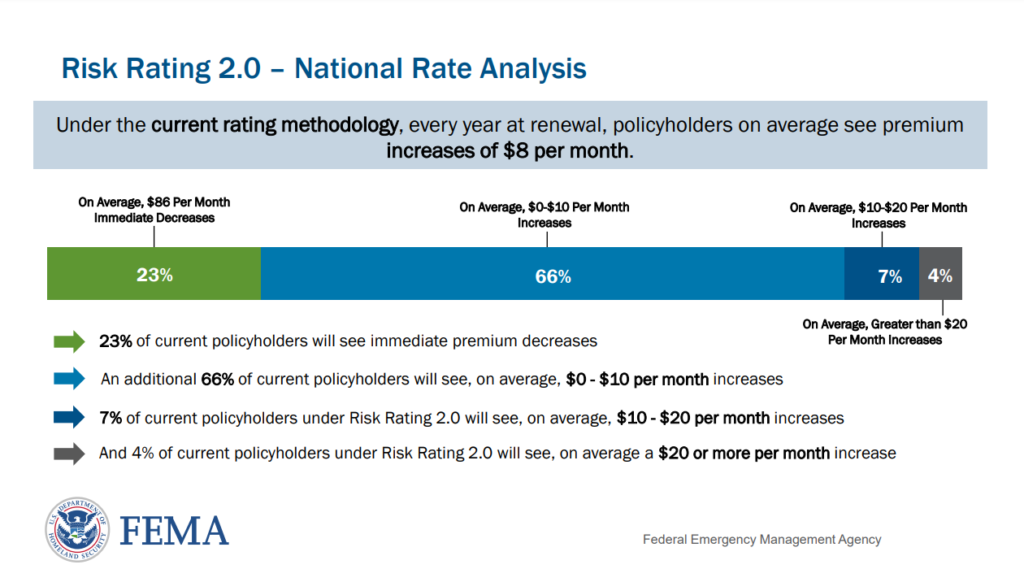FEMA Flood Risk Rating Changes
Atlantic hurricane season is underway, but it doesn’t take a hurricane to cause a flood event. Flooding tops the list as the most common natural disaster in the United States and can happen anywhere. The aftermath of a flood event can be devastating emotionally and financially. The Federal Emergency Management Agency (FEMA) says just one inch of water in a structure can cause up to $25,000 of damage.
Even if your home or business isn’t near a flood zone, securing an adequate flood insurance policy could be a lifesaver when dealing with a natural disaster. FEMA is launching a program this fall that could change how homeowners pay for their flood insurance policies.
FEMA will roll out a new rating system for the National Flood Insurance Program (NFIP), Risk Rating 2.0.
According to FEMA, Risk Rating 2.0 allows the agency to better inform individuals and communities about flood risk, set premiums to signal those risks, and promote actions to mitigate against them. Individuals will no longer pay more than their fair share in flood insurance premiums.
Here’s what you need to know about Risk Rating 2.0:

- In Phase I: New policies beginning Oct. 1, 2021, will be subject to the Risk Rating 2.0 rating method. Also, beginning Oct. 1, existing policyholders eligible for renewal will take advantage of immediate decreases in their premiums.
- In Phase II: All policies renewing on or after April 1, 2022, will be subject to the Risk Rating 2.0 rating method.
Conclusion
The NFIP’s current rating methodology has not changed since the 1970s and does not consider individual flood risk and underlying home values. Risk Rating 2.0 will change the way FEMA views flood risk and prices flood insurance.
FEMA continues to engage with Congress, its industry partners and state, local, tribal and territorial agencies to ensure clear understanding of these changes.
It’s critical to work with industry experts who have the necessary knowledge and experience.
Contact a team member near you at INSURICA.com/our-team to learn more about flood insurance or assist you with your current policy.
About the Author
Share This Story
Related Blogs
OSHA Announces Top 10 Violations for 2025
OSHA recently revealed its top 10 most frequently cited standards in the 2025 fiscal year using preliminary data. This information is valuable for businesses of all kinds, as it helps them identify common exposures that affect their workforce and gives them the information they need to plan their compliance programs.
Cyber Hygiene for Schools: Teaching Digital Safety to Students
Cyber hygiene for schools is more important than ever in today’s digital learning environment. Teaching digital safety to students not only protects their personal information but also strengthens overall school cybersecurity. With increasing online access in classrooms, cyber hygiene for schools must become a routine part of curriculum planning and student behavior expectations.
Mental Health Benefits Go Mainstream: What Employers Need to Know
Once considered a niche offering or a reactive add-on, mental health benefits have now moved to the center of the employee experience. In 2025, nearly half of U.S. employers offer some form of mental health support beyond traditional EAPs—a sharp rise from just 30% in 2023. This shift isn’t just cultural; it’s strategic.








